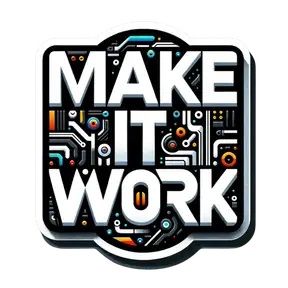Automation Engine
Download MP3Today we delve into BuildKit and Dagger, focusing on their significance in the development and deployment of containerized applications, as well as Kubernetes integration.
- BuildKit's Role: Essential for anyone using Docker Build, facilitating efficient, dependency-aware container builds with advanced caching mechanisms. It's not just for Docker but serves as a versatile execution engine across various projects, including Dagger.
- Eric's Attraction to BuildKit: The power of BuildKit's DAG (Directed Acyclic Graph) execution model and its parallelization and deduplication capabilities drew Eric to maintain and contribute to the project.
- First BuildKit Project: Eric's initial project, bincastle, aimed to build a development environment from source, highlighting BuildKit's ability to handle complex builds.
- Introduction of Dagger: Dagger builds on top of BuildKit, enhances automation by allowing developers to use familiar programming languages without being confined to a specific domain-specific language (DSL). It aims to simplify and optimize automation tasks, particularly in CI/CD environments.
- Dagger's Enhancements over BuildKit: Dagger introduces a language-agnostic layer, making automation more accessible and scalable. It incorporates features like remote caching and a services layer, potentially positioning it as a simpler alternative to Kubernetes for certain use cases.
- Future Directions: The podcast touches on ongoing developments, such as modules for sharing automation code within Dagger, aiming to foster an ecosystem where developers can easily reuse and contribute to collective automation solutions.
The conversation highlights the evolving landscape of development tools, where BuildKit and Dagger play pivotal roles in making containerized development and deployment more efficient and user-friendly. Eric and Gerhard discuss the potential for these tools to simplify and enhance automation, reflecting on past projects and future possibilities.
🎬 View the video part of this episode: Deploying and Experimenting with Dagger 0.9 on Kubernetes 1.28
🎁 Access the audio & video as a single conversation at makeitwork.gerhard.io
🎁 Access the audio & video as a single conversation at makeitwork.gerhard.io
LINKS
dagger --mod github.com/sipsma/daggerverse/yamlinvaders@8071646e5831d7c93ebcd8cca46444250bf25b8c shell play
EPISODE CHAPTERS
- (00:00) - Intro
- (01:43) - What attracted you to BuildKit?
- (03:23) - What was the first project that you used BuildKit for?
- (06:03) - Four years later, do you still want to see that idea through?
- (06:44) - What is Dagger?
- (08:18) - How much does Dagger add on top of BuildKit?
- (10:42) - How does Gerhard think of Dagger in relation to BuildKit?
- (12:48) - Dagger Modules - a way to share automation code
- (14:01) - If someone installs Dagger today, what happens under the hood?
- (14:47) - Why is the Engine distributed as a container image?
- (16:02) - If the Dagger Engine was a single binary, how would you run it?
- (17:05) - Thoughts on BuildKit caching?
- (18:15) - What about remote caching?
- (20:53) - Let's run Dagger on K8s on this Latte Panda Sigma
- (21:43) - SCREEN SHARE
- (22:06) - As we approach KubeCon, what is on your list?
- (23:19) - An idea for next time when we get together



